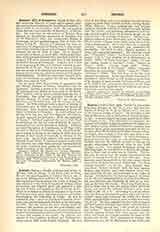

Gegenbauer, JOSEF ANTON VON, an accomplished German historical and portrait painter, b. March 6, 1800, at Wangen, Wurtemberg; d. January 31, 1876, at Rome. He studied first at the Royal Academy in Munich under Robert von Langer, remaining in that city from 1815 to 1823. Among his productions there were two idyllic works which were much admired, a “Saint Sebastian” and a “Madonna and Child”, altar-piece for his native town. In 1823 the painter went to Rome, where he remained until 1826, studying especially the works of Raphael. He became notably successful as a fresco painter, and, on his return to Wurtemberg, the king made him court painter and commissioned him to decorate the Royal Villa of Rosenstein. In 1829 Gegenbauer went again to Rome and worked on frescoes. During his later residence at Stuttgart he was employed from 1836 to 1854 in decorating the Royal Palace with sixteen scenes in fresco from the history of Wurtemberg. These include incidents in the life of Count Eberhard II of Wurtemberg. In the same building are many of his oil paintings, among them being “Two Shepherds”, “Adam and Eve after their Expulsion from Eden”, and “Moses Striking the Rock”. In the Stuttgart Gallery is also his “Hercules and Omphale”. His other paintings in oil, ranging in date from 1829 to 1860 include many on mythological subjects: “Sleeping Venus and Two Satyrs”, “Leda and the Swan”, “Apollo and the Muses”, “Bacchus and Ariadne”, “Venus and Cupid”, “Ceres and Jason“, “Aeolus Aeola”, “Pluto and Proserpine”, “Neptune and Thetis”, several Genii and Amorettes, and some portraits. Among Gegenbauer’s frescoes, in addition to those already mentioned, are “Jupiter giving Immortality to Psyche”, “The Marriage of Cupid and Psyche”, four scenes from the life of Psyche, “The Four Seasons”, an “Aurora”—all at the Villa Rosenstein. In addition to these works, we may mention, as well as various Madonnas, “The Ascension of the Virgin”, “The Crucifixion”, the “Hercules and Omphale”, the last in the Thorwaldsen Museum at Copenhagen.
AUGUSTUS VAN CLEEF

